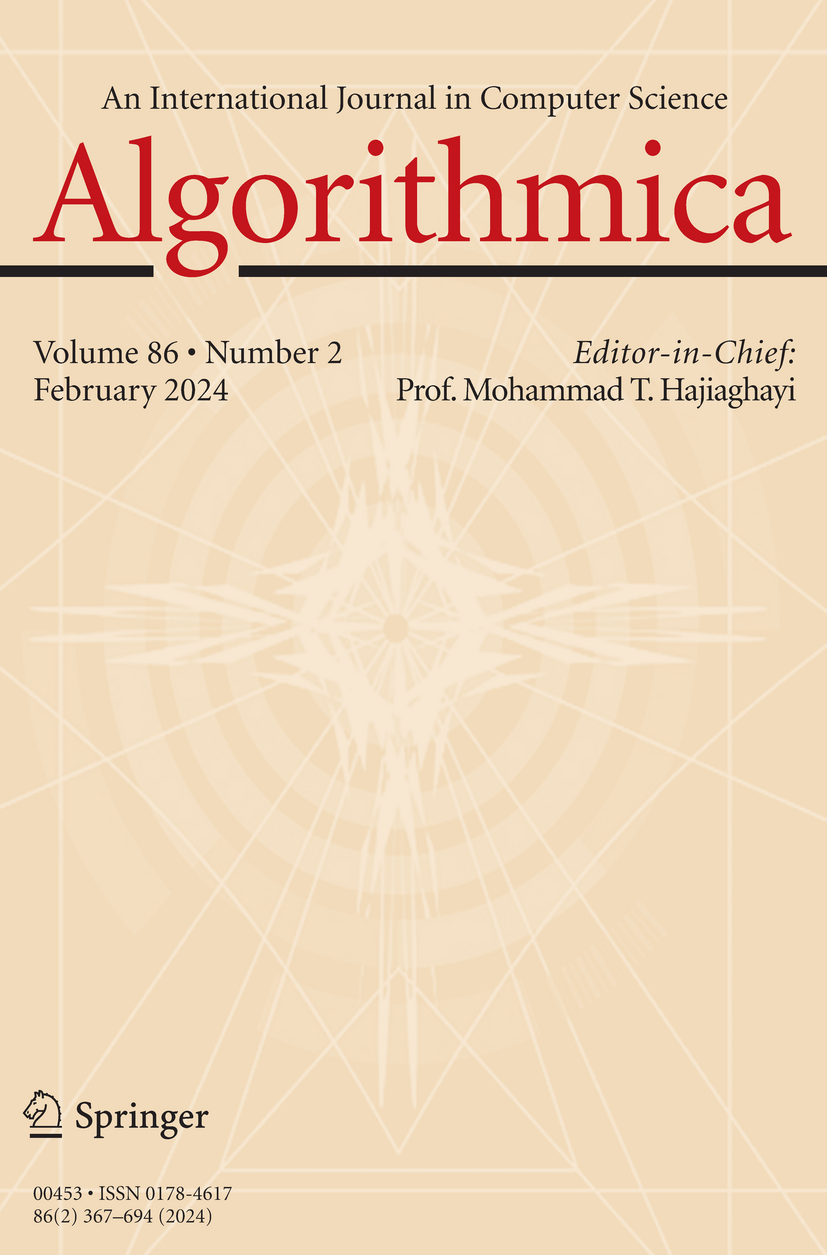dx.doi.org/10.1007/s00453-005-1205-7
Preview meta tags from the dx.doi.org website.
Linked Hostnames
17- 13 links todx.doi.org
- 13 links tolink.springer.com
- 10 links towww.springernature.com
- 3 links toscholar.google.co.uk
- 3 links towww.ncbi.nlm.nih.gov
- 2 links tosupport.springernature.com
- 1 link tocitation-needed.springer.com
- 1 link toidp.springer.com
Thumbnail

Search Engine Appearance
https://dx.doi.org/10.1007/s00453-005-1205-7
Geometric Restrictions on Producible Polygonal Protein Chains - Algorithmica
Fixed-angle polygonal chains in three dimensions serve as an interesting model of protein backbones. Here we consider such chains produced inside a "m
Bing
Geometric Restrictions on Producible Polygonal Protein Chains - Algorithmica
https://dx.doi.org/10.1007/s00453-005-1205-7
Fixed-angle polygonal chains in three dimensions serve as an interesting model of protein backbones. Here we consider such chains produced inside a "m
DuckDuckGo
Geometric Restrictions on Producible Polygonal Protein Chains - Algorithmica
Fixed-angle polygonal chains in three dimensions serve as an interesting model of protein backbones. Here we consider such chains produced inside a "m
General Meta Tags
75- titleGeometric Restrictions on Producible Polygonal Protein Chains | Algorithmica
- charsetUTF-8
- X-UA-CompatibleIE=edge
- applicable-devicepc,mobile
- viewportwidth=device-width, initial-scale=1
Open Graph Meta Tags
6- og:urlhttps://link.springer.com/article/10.1007/s00453-005-1205-7
- og:typearticle
- og:site_nameSpringerLink
- og:titleGeometric Restrictions on Producible Polygonal Protein Chains - Algorithmica
- og:descriptionFixed-angle polygonal chains in three dimensions serve as an interesting model of protein backbones. Here we consider such chains produced inside a "machine" modeled crudely as a cone, and examine the constraints this model places on the producible chains. We call this notion producible, and prove as our main result that a chain whose maximum turn angle is α is producible in a cone of half-angle ≥ α if and only if the chain is flattenable, that is, the chain can be reconfigured without self-intersection to lie flat in a plane. This result establishes that two seemingly disparate classes of chains are in fact identical. Along the way, we discover that all producible configurations of a chain can be moved to a canonical configuration resembling a helix. One consequence is an algorithm that reconfigures between any two flat states of a "nonacute chain" in O(n) "moves," improving the O(n2)-move algorithm in [ADD+]. Finally, we prove that the producible chains are rare in the following technical sense. A random chain of n links is defined by drawing the lengths and angles from any "regular" (e.g., uniform) distribution on any subset of the possible values. A random configuration of a chain embeds into ℝ3 by in addition drawing the dihedral angles from any regular distribution. If a class of chains has a locked configuration (and no nontrivial class is known to avoid locked configurations), then the probability that a random configuration of a random chain is producible approaches zero geometrically as n → ∞.
Twitter Meta Tags
6- twitter:site@SpringerLink
- twitter:cardsummary_large_image
- twitter:image:altContent cover image
- twitter:titleGeometric Restrictions on Producible Polygonal Protein Chains
- twitter:descriptionAlgorithmica - Fixed-angle polygonal chains in three dimensions serve as an interesting model of protein backbones. Here we consider such chains produced inside a "machine" modeled...
Item Prop Meta Tags
3- position1
- position2
- position3
Link Tags
9- apple-touch-icon/oscar-static/img/favicons/darwin/apple-touch-icon-92e819bf8a.png
- canonicalhttps://link.springer.com/article/10.1007/s00453-005-1205-7
- icon/oscar-static/img/favicons/darwin/android-chrome-192x192-6f081ca7e5.png
- icon/oscar-static/img/favicons/darwin/favicon-32x32-1435da3e82.png
- icon/oscar-static/img/favicons/darwin/favicon-16x16-ed57f42bd2.png
Emails
3Links
55- https://citation-needed.springer.com/v2/references/10.1007/s00453-005-1205-7?format=refman&flavour=citation
- https://dx.doi.org
- https://dx.doi.org//wayf.springernature.com?redirect_uri=https%3A%2F%2Flink.springer.com%2Farticle%2F10.1007%2Fs00453-005-1205-7%3Ferror%3Dcookies_not_supported%26code%3D838a2a0a-a52a-4893-b695-d9a11f233b50
- https://dx.doi.org/article/10.1007/s00453-005-1205-7/metrics
- https://dx.doi.org/journal/453